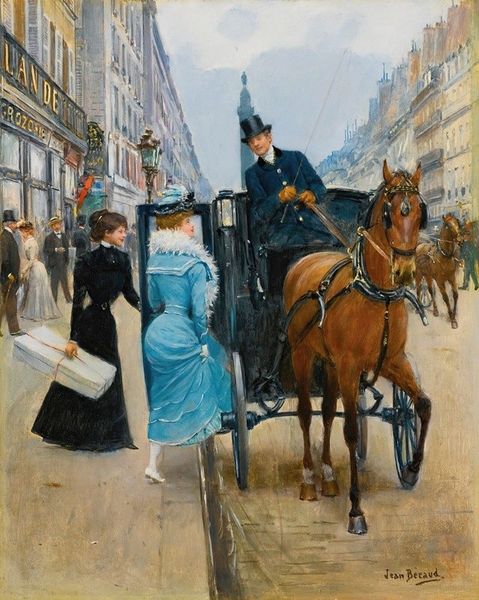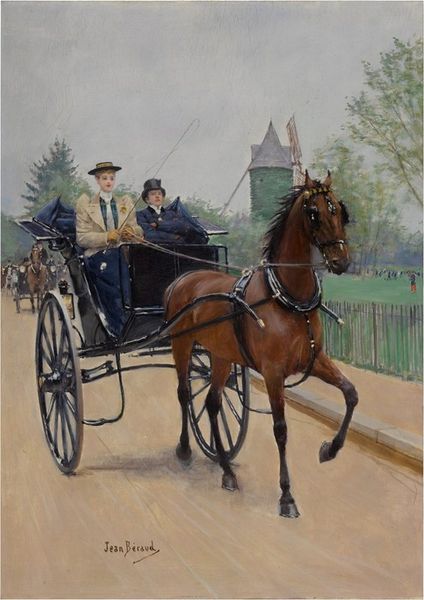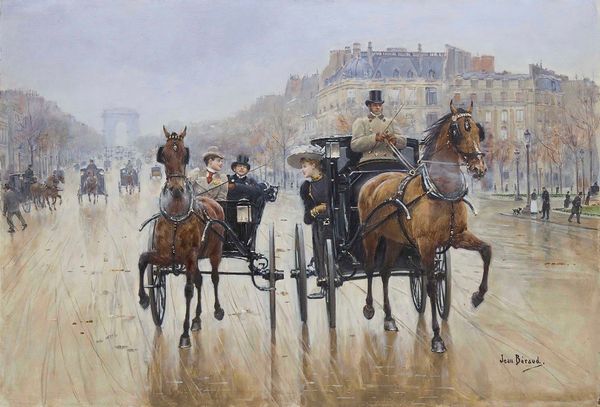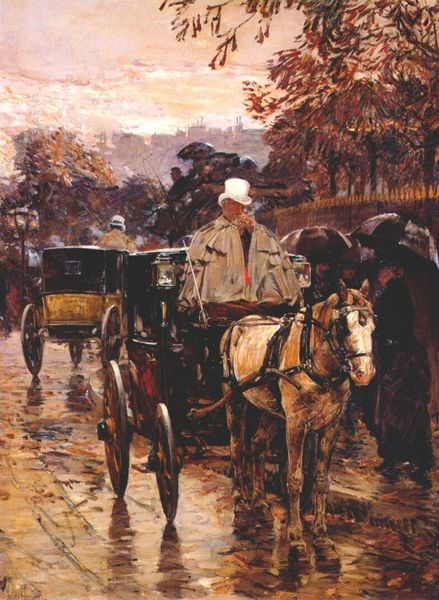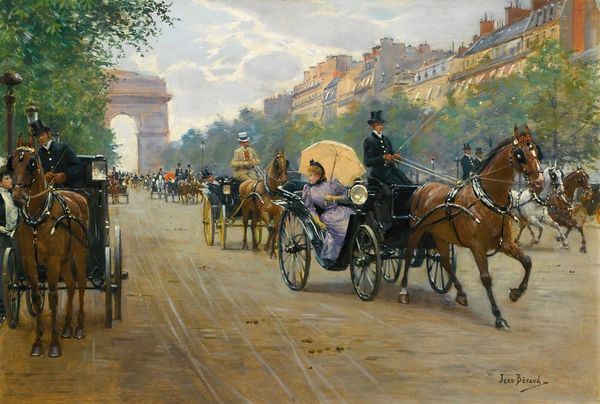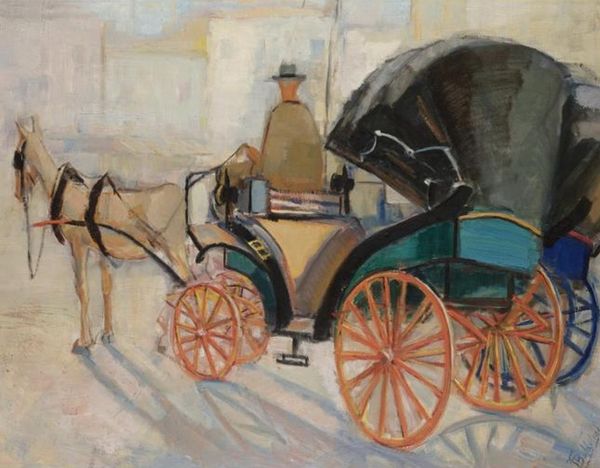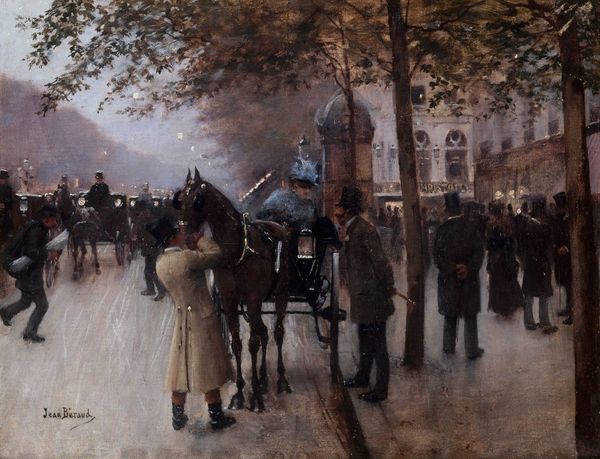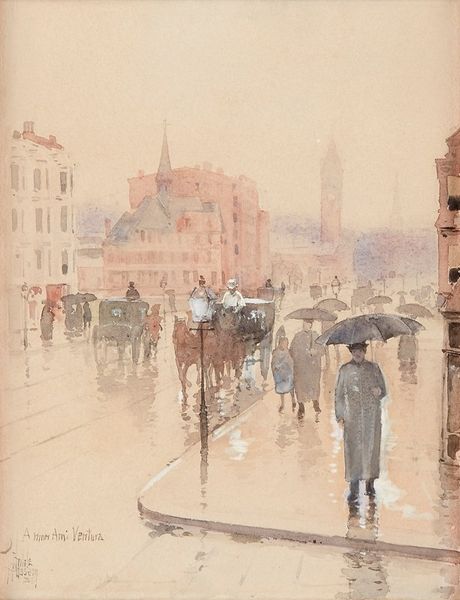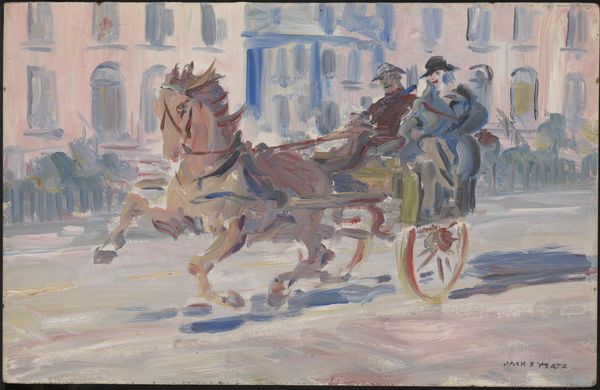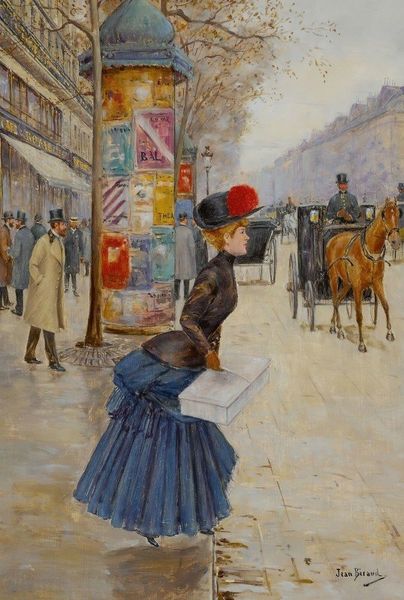
painting, gouache
#
portrait
#
gouache
#
painting
#
impressionism
#
gouache
#
oil painting
#
cityscape
#
watercolour illustration
#
genre-painting
Copyright: Public Domain: Artvee
Curator: What strikes me immediately about this piece is the sheer elegance captured in a transient moment. There's a definite air of Parisian chic. Editor: That's a great observation. The artwork before us is titled "Jeune Femme Descendant D’un Fiacre," and it’s attributed to Jean Béraud. The medium appears to be gouache or possibly a combination of oil and gouache, given the luminous yet matte surface quality. I am quite moved by the composition and use of the materials. Note, in particular, how the artist has handled the reflections on the wet Parisian street; it suggests much about urban labor, as one might consider who ensures the functionality of the transport depicted or whose work attends to this infrastructure, enabling leisure. Curator: Absolutely, there is a remarkable ability to evoke mood with what appear to be loose, impressionistic brushstrokes. Looking at the woman's attire, her descent from the fiacre or carriage becomes more than a simple act; it's a performance, isn't it? The city as a stage. One also must reflect on the circumstances of women, whose freedom was tied to social codes or conventions within this particular social strata. Her clothing marks her position in society, not freedom as much as constrained power. Editor: A keen point regarding social codes and the construction of femininity in Béraud's era! One cannot dismiss the social function of these markers and class boundaries expressed and reproduced by the material conditions in Paris at this time. These are also evident in other features, like the architecture in the distance or even the production and acquisition of clothing like hers or even the manufacturing of the carriage itself. Consider the workers involved in the maintenance and operation of these carriages: the drivers, the stable hands, the blacksmiths, and so on. The horse deserves some solidarity! Curator: Yes! When seen from that point, we start to reflect not only on those not pictured or mentioned in the canon but even on other species of laborers or "others." That speaks to questions of representation and whose stories we center and privilege, something so critical for us as thinkers and viewers even now. Editor: Indeed. And considering Béraud’s skill in depicting the tangible reality of the cityscape alongside its inhabitants' activities opens conversations on labor, means, or access that shape not only art history but social history more broadly, hopefully bringing viewers of his works to broader contemporary conversations of representation, inclusion, labor conditions, or power today.
Comments
No comments
Be the first to comment and join the conversation on the ultimate creative platform.
